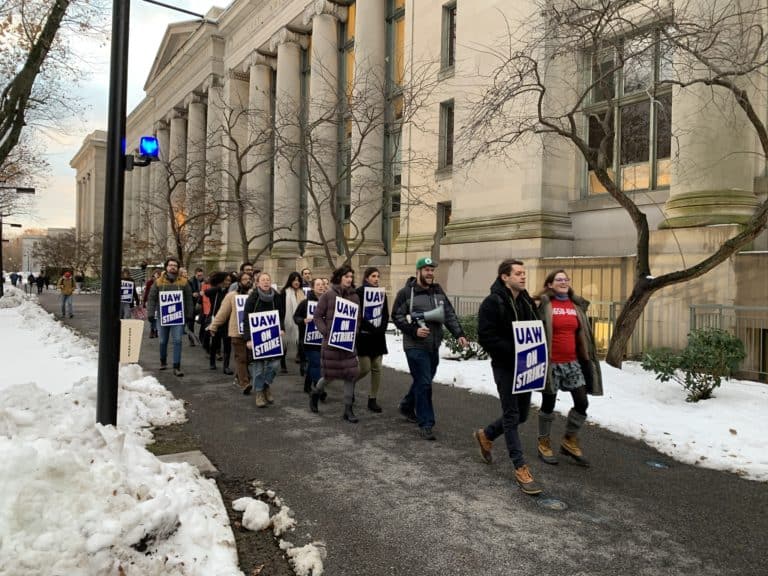Deanna Krokos is a student at Harvard Law School
Healthcare costs and coverage dominated the democratic party primary in 2020, with numerous plans and policies being considered. A new report adds color to that conversation, showing that in 2020, employer-sponsored healthcare became more expensive across the board. The Kaiser Family Foundation reports that annual family premiums increased by 4% this year, higher than the 3.4% year-to-year increase in average wages and nearly double the 2.1% rate of inflation. This follows an August report from the Commonwealth Fund that found deductibles rose faster than income since 2010, and deeming the current landscape an “affordability crisis.”
This week, the Wall Street Journal published a study of economists indicating that pandemic-related job losses are not expected to fully rebound until 2023, a more grim outlook than a similar survey predicted six months ago. Labor market hiring has slowed and new unemployment claims remain at record highs. The same survey predicted a faster recovery for GDP and financial markets, highlighting the obvious inequality exacerbated by this crisis.
A new PAC is asking business leaders to sign a pledge: if President Trump is re-elected, the business will give their employees a raise. The Washington Post reports that “Raise Up for Trump” PAC is seeking at least 1,000 businesses to sign the pledge, impacting at least 1,000,0000 workers. This initiative draws focus to the lower-than-expected wage growth during the Trump Administration, even as unemployment fell through 2019.
This week, BloombergLaw reported that during the early stages of the covid-19 pandemic, Labor Secretary Eugene Scalia met with business leaders “far more” than workers or worker advocacy groups. On Friday afternoon, the Department of Labor released Scalia’s schedule for the first time in over a year, including call and meeting logs for the month of March. The logs demonstrate how frequently Scalia turned to business and industry leaders’ opinions on handling the pandemic. Though the logs do not reflect meetings taken after March, its notable that Scalia did not meet with any healthcare sector unions or worker coalitions in the first month of the crisis, when hospital capacity, access to adequate PPE, and other healthcare-related questions were widely regarded as top priority. He did, however, meet with hospital industry groups.






Daily News & Commentary
Start your day with our roundup of the latest labor developments. See all
November 28
Lawsuit against EEOC for failure to investigate disparate-impact claims dismissed; DHS to end TPS for Haiti; Appeal of Cemex decision in Ninth Circuit may soon resume
November 27
Amazon wins preliminary injunction against New York’s private sector bargaining law; ALJs resume decisions; and the CFPB intends to make unilateral changes without bargaining.
November 26
In today’s news and commentary, NLRB lawyers urge the 3rd Circuit to follow recent district court cases that declined to enjoin Board proceedings; the percentage of unemployed Americans with a college degree reaches its highest level since tracking began in 1992; and a member of the House proposes a bill that would require secret ballot […]
November 25
In today’s news and commentary, OSHA fines Taylor Foods, Santa Fe raises their living wage, and a date is set for a Senate committee to consider Trump’s NLRB nominee. OSHA has issued an approximately $1.1 million dollar fine to Taylor Farms New Jersey, a subsidiary of Taylor Fresh Foods, after identifying repeated and serious safety […]
November 24
Labor leaders criticize tariffs; White House cancels jobs report; and student organizers launch chaperone program for noncitizens.
November 23
Workers at the Southeastern Pennsylvania Transportation Authority vote to authorize a strike; Washington State legislators consider a bill empowering public employees to bargain over workplace AI implementation; and University of California workers engage in a two-day strike.